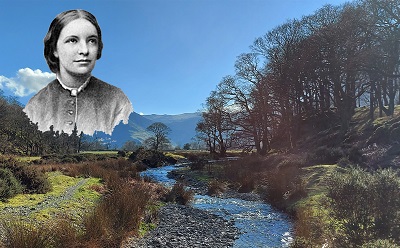In the first of our series of blogs to celebrate Women's History Month, Immediate Past President Wei Yang writes around her role model, Octavia Hill.
By Dr Wei Yang FRTPI FAcSS MCIHT
 International Women’s Day was celebrated for the first time on 8 March 1911, exactly 111 years ago. Then in 1987, 35 years ago, March became an annual declared month to highlight women’s contributions in history and contemporary society. With joint effort from women and men, progress has been made towards a more equal society, but obviously our mission is far from being accomplished.
International Women’s Day was celebrated for the first time on 8 March 1911, exactly 111 years ago. Then in 1987, 35 years ago, March became an annual declared month to highlight women’s contributions in history and contemporary society. With joint effort from women and men, progress has been made towards a more equal society, but obviously our mission is far from being accomplished.
Today I would like to share the story of my role model, Octavia Hill (1838 - 1912). Her courage, determination and creativity have inspired me enormously. I believe her story can inspire many more to #BreakTheBias and to take our own initiatives in creating a more diverse, equitable, and inclusive world.
Octavia Hill was one of the most influential English social reformers in history. She lived in the era before women had the vote. With no formal schooling, she worked from the age of 14 for the welfare of working people. It is not an exaggeration to say that everyone in Britain benefits from her legacy.
Social work and social housing
Octavia set the foundation for modern social work and social housing. In 1865, started from managing three cottages of six rooms each in London Marylebone, Octavia initiated her own house rental scheme to improve working-class living conditions with a modest 5% return to her landlord – the writer and thinker John Ruskin. The scheme was a success and rapidly expanded with new investors. By 1874 Octavia had over 3,000 tenancies around London. She was a founding member of the Charity Organisation Society (now the charity Family Action) established in 1869. The society organised charitable grants and pioneered a home-visiting service that formed the basis for modern social work.
Cultural philanthropy and equal access to nature
Octavia closely connected cultural philanthropy to social reform. In 1877, Octivia formed the Kyrle Society with her sister Miranda with the aim of bringing beauty, nature, arts and music to everyone. She campaigned for the availability of open spaces for poor people. She believed in "the life-enhancing virtues of pure earth, clean air and blue sky” and tirelessly argued for the importance of equal access to nature by everyone in cities and the need to stop the destruction of the natural landscape. Through her support, London's Hampstead Heath, Parliament Hill Fields, Vauxhall Park and Hilly Fields were saved from being built on. She was the first to use the term "Green Belt" for the protected rural areas surrounding London.
Octavia was a person with great foresight and courage to act. She once said, “I was impressed with the fact that unless some very much larger view of the quantity of open space needed should be taken by the authorities, the time should go past very rapidly when it would be possible to save what in the future would be felt to be almost essential to the health and well-being of Londoners.”
The National Trust
In 1885, Octavia Hill, Robert Hunter and Hardwicke Rawnsley worked together to raise public awareness of the railway developments threatening the Lake District. Their common belief that nature, beauty and history are for everyone led to the establishment of The National Trust for Places of Historic Interest or Natural Beauty in 1895. Until her death in 1912, Octavia continued to fight for the preservation of the countryside. Now the National Trust has become one of the largest charities in the world with more than 5.37 million members. It looks after over 250,000 hectares of farmland, 780 miles of coastline and 500 historic properties, gardens and nature reserves “for ever, for everyone”.
I still vividly remember the day when I first heard about Octavia Hill. It was in summer 2000, when I visited Sir Bernard Feilden during my first summer holiday in Britain. Lady Feilden took me to the nearby Blickling Hall, a National Trust property in Norfolk. I was so impressed by the whole concept of The National Trust and wanted to set up one in China. I bought a book published on the National Trust’s centenary and read about Octavia Hill for the first time. Since then, she became my role model.
It is remarkable that at a time when women were invisible in public life, Octavia Hill could make such an immense difference to society. Through reading her story, I realise that there is no age and gender difference in our spirit, no race difference in our soul. If we believe in ourselves, our vision and our effort, we can all make a lasting difference for good.
Today, facing so many crises around the world and in the country, rather than feel helpless and hopeless we would do well to remember people like Octavia Hill. Her story is a rich source of inspiration for us to carrying on the unfinished mission of making our world a better and a fairer place.
Here I would like to quote some of the inspiring words from Octavia Hill to remember her and all the women have flighted tirelessly for all of us:
“We too readily sit down, under imperfect or bad conditions instead of setting ourselves to think over what may or may not be done to alter them.”
"When I am gone, I hope my friends will not try to carry out any special system, or to follow blindly in the track which I have trodden. New circumstances require various efforts, and it is the spirit, not the dead form, that should be perpetuated.”
"What we care most to leave them is … the quick eye to see, the true soul to measure, the large hope to grasp the mighty issues of the new and better days to come – greater ideals, greater hope, and patience to realise both."
The same is true for the planning profession today. In the 21st Century, we need to inherit our founding spirit, not the dead form, and to do all we can to advance the profession with greater ideals and greater hope for everyone on the planet.
References:
- Boyd N. (1982) Three Victorian Women Who Changed Their World. Oxford: Oxford University Press
- Jones S. (Ed. 2012) The Enduring Relevance of Octavia Hill. London: Demos.
- Octavia Hill: her life and legacy, https://www.nationaltrust.org.uk/features/octavia-hill-her-life-and-legacy
- National Trust: Our founders, https://www.nationaltrust.org.uk/features/our-founders
- Octavia Hill, https://en.wikipedia.org/wiki/Octavia_Hill
- Octavia Hill’s Birthplace House, http://www.octaviahill.org/about-octavia-hill/conservation/co-founder-of-the-national-trust/


